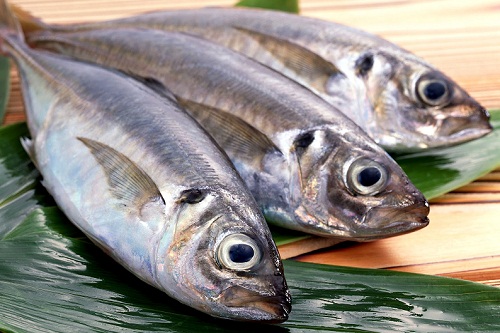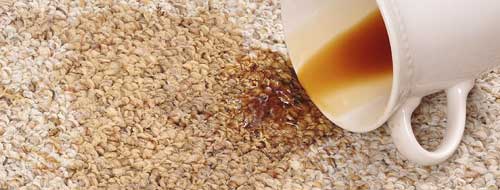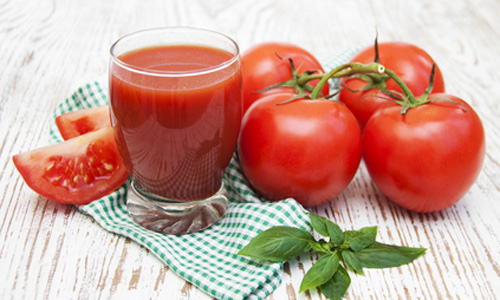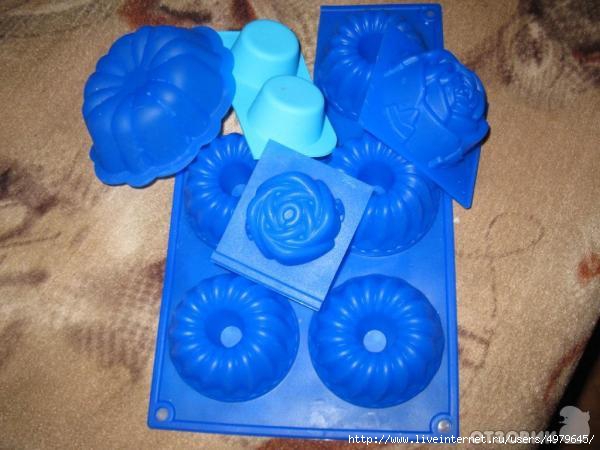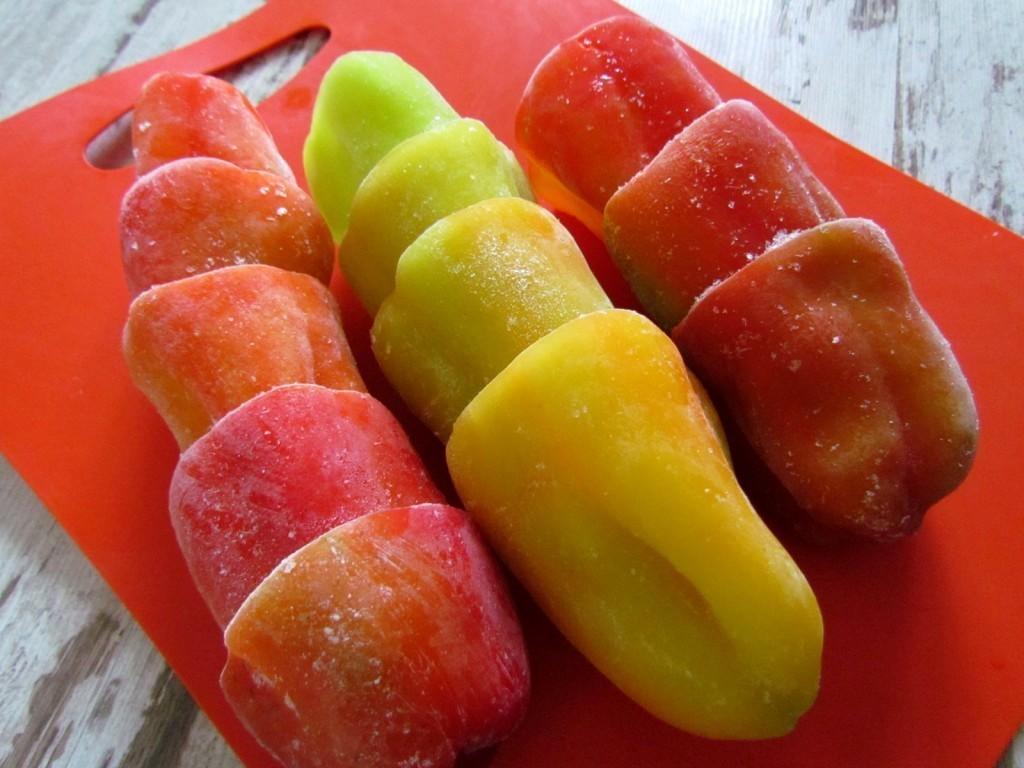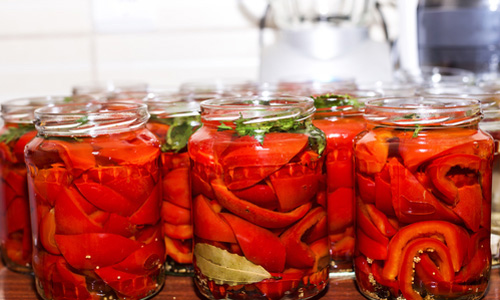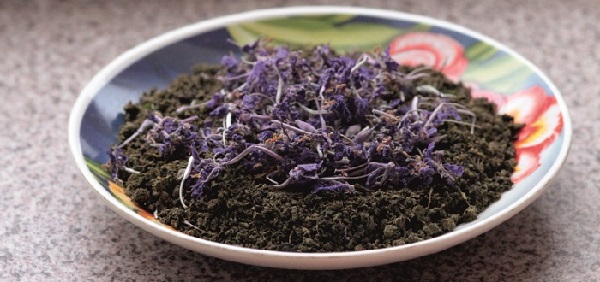Rice vinegar: what can be replaced, how to make at home. How to replace sushi rice vinegar
Vinegar is known to people from ancient times, it is even mentioned in the Bible and the Sunnah. There are more than 4 thousand types of its preparation, and the recipes of many Asian dishes include expensive vinegar, the basis of which is rice. The question of how to replace rice vinegar is of interest to many housewives, but is it worth it? Let's try to understand this article.
What dishes is rice vinegar used for?
Sushizu - that's what they call a mixture of rice vinegar with granulated sugar and simple salt. In 1 liter of ready-made dressing used in the preparation of classic sushi, contains 600 g of ordinary white sugar and 200 g of salt.
Rice vinegar is traditionally used to prepare many dishes:
- salads;
- drinks;
- fish and meat dishes;
- various sauces.
The use of the product corresponds to its variety, there are three of them - white, black and red vinegar.
For the preparation of sushi and rolls, white rice vinegar is suitable. Other types are used for dressing soups, creating sauces and drinks.
How can I replace the product for sushi and rolls
Buy rice vinegar for sushi and rolls is easy. Although its price is several times higher than other types of natural vinegar, experienced cooks do not recommend replacing it with something else.
There is ordinary rice vinegar on sale, and there is already ready-made seasoning for sushi based on it - Sushizu. You must carefully read the composition on the label, if sugar and salt are indicated among the components, then this is a ready-made dressing. Add it to sushi in the amount of 150 g per 1 kg of cooked boiled rice.
If you bought regular rice vinegar, you can make the dressing yourself. For 1 kg of finished rice you will need 100 g of vinegar, 50 g of granulated sugar and a small spoon of fine salt. In order for the granules to dissolve completely, the vinegar will need to be slightly warmed up, not allowing boiling.
The subtleties of pickling meat:
- Marinate meat before frying. Only pork or beef is suitable for this; chicken does not like such an additive in marinade.
- If it is pork, take the neck, the inside of the ham or tenderloin, for beef - a thick and thin edge, tenderloin.
- For marinade mix: chopped onions (2 tbsp.), Table vinegar 9% (2 tbsp.), Olive oil (2 tbsp.), Mustard (1 tsp.), Seasoning for kebabs, black ground pepper.
- They put marinated meat for at least 4 hours, and preferably until morning.
The subtleties of pickling fish (mackerel) for sushi.
To make the marinade, take:
- soy sauce;
- mitsukan (the same rice vinegar);
- sake;
- ginger shavings;
- mirin (sweet rice wine).
Algorithm of actions:
- All components are mixed in equal proportions.
- Add a spoonful of granulated sugar and salt.
- Cut the mackerel - cut off the head and separate the fillet.
- Bones are removed from the fillet with tweezers.
- Pour fillet with marinade for at least 3 hours.
Ginger pickling.
Required Products:
- unpeeled ginger - kilo;
- red wine - 100 ml;
- beets - ½ pcs.;
- vinegar (any available) - 240 ml;
- granulated sugar - half a glass;
- filtered water - half a liter + 2.5 l of boiling water;
- salt.
Cooking:
- Ginger root is pre-peeled and salted.
- They put it in a food bag, wrap it tightly and send it to cool until morning.
- After the designated time, the root is put on a colander, washed.
- With a knife for peeling vegetables, they chop it with elegant plates along the fibers.
- Pour into a large bowl, add a spoonful of medium-sized salt.
- Pour 2.5 liters of boiling water.
- Cover for 20 minutes.
- Marinade is prepared by dissolving granulated sugar, wine and vinegar in water. Sliced \u200b\u200bbeets are added to the resulting composition.
- Water is drained from ginger, transferred to pre-prepared cans and poured with a ready-made marinade
- Cool and set for a day in cool.
You can not add wine to the recipe, but it makes the taste of ginger more piquant. If you do not put the beets, the ginger will turn out not pink, but white and yellow.
How to make rice vinegar at home
Real rice vinegar is made in Korea. There, technology and the secrets of its production are passed down from generation to generation.
This process is lengthy and requires not only knowledge of the recipe, but also the presence of special microorganisms that provide fermentation.
If you want to experiment, try making a product that resembles rice vinegar for rolls and sushi, according to the following recipe.
Ingredients:
- rice - 1 tbsp .;
- water - 1 l;
- sugar - 300 g;
- yeast - ¼ st. l .;
- egg - 1 pc.
Process description:
- Rice is poured with cold water and left for 4 hours.
- Then the product is placed in the cold until morning, after which it is filtered, without squeezing the grains.
- Sugar is added to rice water and heated in a steam bath until it is completely dissolved.
- Dry yeast is introduced, having previously cooled the broth to a comfortable temperature.
- Pour the composition into a sterile jar and, covering with gauze, put in a dark place for 1 week.
- After this period, pour the liquid into another sterile jar, leaving a precipitate at the bottom of the previous one.
- Withstand the solution, covering with gauze, another 1 month.
- Then it is poured gently, without sediment, into a saucepan and future vinegar is boiled by adding egg white.
- Filter the composition and bottle. Cork tightly.
Traditional rice vinegar is prepared using a different technology. The fermentation process lasts more than a year. All operations are performed manually. Rice vinegar, industrially prepared in the West, has a more acidic taste.
What is different from other types of vinegar
There are different types of vinegar - synthetic and natural. Ordinary synthetic table vinegar cannot be used for food purposes, according to nutritionists. In some foreign countries this is prohibited by law. Such a product does not contain anything useful, it is valued only for its sour taste and preserving ability. In the table of food additives, it is listed as E 260.
Vinegar is usually used for dough to make it more airy, added to salads, seasonings and preservation. The problem is that the concentration of synthetic vinegar can be higher than that specified by the manufacturer, and after eating dishes seasoned with it, you can get a mucous burn.
Natural vinegar is much more beneficial. It can not contain acid in a concentration of more than 9%, is safe for health. The concentration of rice vinegar for sushi is only 3%.
Such a product costs more than a synthetic one. It is prepared from rice, grape, apple or fruit and berry wine. The label says: "ethyl alcohol and culture of acetic bacteria." All healthy vitamins, macro and microelements are preserved in natural vinegar, its shelf life does not exceed 1 year.
The history of the origin of rice vinegar dates back a little over 20 centuries, it was then that it was created and prepared in China. And in the 3rd century BC, the Japanese began to actively use it when cooking food, it was from there that he began his journey to other countries of the globe.
Then use such a luxurious product, not everyone could afford, since it had a rather high cost. They used it as a seasoning for culinary masterpieces with rice.
Over the years, they began to use rice vinegar for rice for sushi. Observing all the Japanese canons of those times, the recipe for creating sushi had the following sequence: raw fish was seasoned with salt and combined with rice. This combination of ingredients made it possible to isolate lactic acid from rice using fish enzymes, which actually gave the fish a slightly sour taste and helped extend the shelf life of sushi to almost one year.
Vinegar for sushi rice, unlike other vinegars, has a rather mild flavor. In addition, this product has excellent antibacterial qualities, because many Japanese dishes are created from fresh fish. Rice vinegar is expensive, so you can easily make it at home.
For someone who does not know how to replace rice vinegar for sushi, we discover a little secret, it can be ordinary wine, apple or table vinegar. But you need to remember, the above vinegars have a more pronounced sour taste, so you need to season them with sushi rice very carefully and in moderation.
How to make sushi rice vinegar at home
Not everyone, it turns out, can buy ready-made rice vinegar for sushi in the store, you can cook it at home. There are several alternative recipes for making rice sushi vinegar.
For him you will need:
60ml grape vinegar;
3 tsp Sahara;
1 tsp salt.
All products are mixed and put on fire to dissolve loose components. But you can’t let it boil.
Another option for home-made rice vinegar is the combination of apple, hot water, sugar and salt vinegar.
The composition of many sushi and rolls of traditional Asian cuisine includes three main ingredients, the rest change, giving an indescribable taste - they are removed, added ... In Japanese cuisine there are always rice, rice vinegar and nori seaweed (another name is kombu). The disadvantage of the listed permanent components is their high price. Therefore, if desired, it can be replaced with more economical analogues.
What is the uniqueness of rice vinegar
Traditionally, rice vinegar is made from rice wine or fermented brown rice (sometimes black is also used). It has a pleasant mild flavor, which gives those dishes, which include. The difficulty in replacing is that it is difficult to reproduce such a mild taste and a slightly sweet taste, so other vinegar will need to be mixed with water, salt, sugar or soy sauce. Vinegar infused in rice gives the dishes only a slight, barely noticeable, sourness. Rice-based vinegar is a dietary seasoning, which is why it is so common in the preparation of many dishes not only in Far East Asian, but also in European cuisine. It is added to cold and warm salads, soups, sauces, as well as marinades, Japanese and Chinese noodles, hot dishes and, of course, to rolls and sushi - it is a natural preservative for raw fish.

Rice-based vinegar fits many dishes
How does it differ from other types of vinegar
Firstly, it is not so “caustic” and does not harm the gastric mucosa, for its use there are no contraindications for diseases of the gastrointestinal tract.
Secondly, the most important property of rice vinegar is the ability to reduce the calorie content of the products in which it is added, as well as contribute to the proper metabolism.
And thirdly, rice vinegar contains the largest number of amino acids, there are 20 of them! They fight against toxins in the body.

Rice Vinegar is a Dietary Product
What can replace rice vinegar
There are several replacement options, these are pure vinegar (wine and apple), and various dressings based on them. Consider all our options. So, to replace rice vinegar fit:
- Table vinegar 6%;
- Ginger pickle;
- White wine vinegar;
- Acetic essence 70%;
- A variety of gas stations.

Red wine vinegar can be used to replace rice vinegar in its pure form or at the base of dressings
Pure vinegar when replacing changes the taste of the finished dish, it turns out to be slightly sharper and sour, not as pleasant as when using rice vinegar. In addition, they give a sour smell.
As for the vinegar essence of 70%, it has a very large acid, and to replace it with rice vinegar, you must first dilute it with water in the proportions determined for each level of concentration of vinegar. For example, in order to get 6% vinegar from it, which can already be replaced with rice, you need to 1 tbsp. spoon of essence add 12 tbsp. tablespoons of water.
Do not replace rice vinegar with balsamic, as it is too spicy and interrupts the taste of fish, rice, and other ingredients of the dish. Also, you can not take 9% table vinegar to replace, it will give too sour taste.
What is the concentration of the product? Is it diluted?
Each vinegar has its own concentration, somewhere - more acetic acid, somewhere - less. The concentration of rice vinegar - 3%, apple - 4-5%, wine is 4%, 6% and 9%. Acetic acid solution - essence has a concentration of 70%.
For some recipes, you need to change the concentration of vinegar, diluting it with clean water. There are special online vinegar concentration calculators for this, they can be found on the Internet. For each initial vinegar and the desired result, there are proportions. For example, in order to get 9% vinegar from vinegar essence 70%, we part 1 part vinegar in 7 parts water.
How to get 6% from 9%
Most often diluted 9% vinegar to 6%. So, to change the concentration, you need to dilute 9% vinegar with water in the following proportions: 2 parts of available vinegar and 1 part of water, that is, 2 cups of vinegar 9%, we take 1 cup of water, dilute, and as a result we get 3 cups of vinegar 6%.
How do vinegar dressings
When cooking Japanese dishes, some housewives replace rice vinegar not with pure vinegar from other materials, but with vinegar-based dressings. Here are some of the recipes:
Red grape vinegar dressing
- Mix 4 tbsp. tablespoons of wine vinegar, 3 teaspoons of sugar and 1 teaspoon of salt;
- Bring to a boil, but be careful not to let it boil.
With apple
- 1 tbsp. a spoonful of apple cider vinegar mixed with 1 tbsp. a spoonful of clean water (it is desirable that it be warm or at least have room temperature), add 3 teaspoons of sugar and 1 teaspoon of salt;
- Bring to a boil. Just as in the previous version, do not boil.
Acetic Soy
- 2.5 tbsp. tablespoons of table or white wine vinegar mixed with 2.5 tbsp. tablespoons of soy sauce, add 1 tbsp. a spoonful of sugar;
- Boil. You can add spices and sesame seeds.
Lemon
- 2 tbsp. tablespoons of lemon juice mixed with 2 tbsp. tablespoons of warm water, add 1 teaspoon of sugar, 1/2 teaspoon of salt;
- This dressing does not need to be heated and brought to a boil. After dissolving the salt and sugar, it is ready.
Many people cannot distinguish lemon dressing in Japanese dishes from real rice vinegar, this suggests that this substitute does its job perfectly.
Green with algae
- You can use 1 sheet of nori or 2 sheets of other algae, do not take kelp, as it gives an unpleasant bitterness;
- Take 2.5 tbsp. tablespoons of any vinegar (you can use apple or wine), 2.5 tbsp. tablespoons of sugar; 1/2 teaspoon of salt;
- We heat everything until sugar and salt dissolve;
- Grind the algae, add them to the vinegar mixture and beat everything with a whisk until smooth.

With algae, you can also make a dressing that replaces rice vinegar.
As close as possible to the properties of real rice vinegar will be home-made rice vinegar. Of course, it takes a lot of time:
- Pour 1 cup of washed round-grain rice into a deep glass dish;
- Pour with clean water (you need 250 ml, a glass and a quarter of a glass);
- Leave the soaked rice for 4 hours at room temperature, then place in the refrigerator for a longer time, for example, night;
- We filter the rice through cheesecloth or other clean cloth (before that we do not squeeze it), at the output we get 200 ml of liquid, if less - add boiled water to a glass;
- In the resulting liquid, pour 4 tbsp. tablespoons of sugar, let it dissolve, stirring with a wooden (this is an important condition) spoon;
- We put such a rice-sugar solution in a water bath, as soon as the water under it begins to boil, count down 20 minutes;
- Remove from the water bath, let cool;
- Add 1/3 teaspoon of dry yeast, mix;
- Leave the solution for a week in a glass jar to ferment. The jar should not be closed, but its top should be covered with clean gauze - it provides air access and protects against dust and other unnecessary substances;
- After a week, the solution stops wandering and bubbling, which means that sugar has almost completely turned into alcohol, we leave it to settle for another month;
- After the specified period has passed, drain the solution through cheesecloth and boil;
- Cool, pour into a bottle of dark glass - rice vinegar does not like light, and put it in the refrigerator;
- Rice vinegar is ready.

Turbidity of homemade rice vinegar can be easily removed
The drained solution may be cloudy, this does not mean that you did something wrong. You can lighten it by adding 1 beaten protein of fresh chicken egg when boiling. After this, it is better to drain the solution again through cheesecloth.
Rice vinegar is used in Asian cuisine, primarily for sushi and rolls. Can this ingredient just be excluded from the recipe? We answer: no, without it - absolutely nothing. Rice vinegar serves as a kind of fastening link - it helps rice stick to nori seaweed, into which it is wrapped, but prevents them from sticking together. Therefore, we either replace it, or cook at home on our own, or buy an original product.

Rice vinegar is an essential element in making rolls.
How to replace the product when pickling
As you know, rice vinegar is also used for marinade. For example, it is present in ginger marinade. To replace, we prepare such a gas station (at the output we get 1/3 cup):
- We dilute apple (5%) or wine (6%, 9%) vinegar with water to a concentration level of 4%. If we take wine vinegar 6%, the proportions will be as follows: 3 tbsp. tablespoons 6% vinegar need 1.5 tbsp. tablespoons of water;
- Add 2 tbsp. tablespoons of sugar and 1.5 teaspoons of salt;
- Bring to a boil.
Substitution in rolls and sushi
You can use any of the above dressings, the choice of a substitute depends only on the remaining ingredients that make up the dish. In sweet rolls, you will not add green dressing with seaweed, but lemon dressing will be most welcome.
In recent years, many fans of Asian cuisine have appeared in our country. Most people prefer to visit specialized restaurants, as it is rather difficult to make many dishes at home due to the presence of special ingredients in recipes. These include, for example, rice vinegar, which is often used in recipes. Some sushi lovers are interested in how you can replace such vinegar to cook them at home.

What is it like?
In China, Japan and several other Asian countries, rice vinegar is one of the most commonly used foods in the kitchen. It differs from other varieties of vinegar in a sweet, mild taste. China is considered the birthplace of rice vinegar, from where it gradually entered Japanese cuisine traditions. There are three types of product: white, black, and red. Each of them has its own unique taste.
- Black vinegarproduced from brown rice, to which bran is added. Standard production technology involves pouring grains into a clay pot, which is partially immersed in the ground. Water is poured into the pot and a special yeast is added, for which boiled rice and yeast are used. In a pot warmed by the sun's rays, the fermentation process starts, the duration of which is up to six months. In this case, glucose is produced from starch, which is converted into alcohol. And from alcohol vinegar is already obtained. After receipt, the acid usually usually ripens within about six months. At the exit, the manufacturer receives black sweet vinegar with a thick consistency.
The longer it is insisted, the thicker the consistency and a darker shade.

- Red vinegar made from red varieties of rice. For the fermentation process, water is used, in which red yeast is added. They are obtained by fermenting red rice with a special mold fungus. They are very good for health, as they contain substances that regulate cholesterol. And rice itself has a beneficial effect on the heart.

- White vinegar It is considered a standard option in the preparation of sushi of various kinds or sashimi. It has an unusually mild taste. It is made from rice with a lot of gluten.
Alternative
A worthy alternative is grape vinegar. But the concentration of acid in it is quite large compared to the Asian counterpart, as a result of which the taste of dishes will be different. In this regard, grape vinegar should be diluted to a concentration of 4%.
Then it is poured into a cup (4 tablespoons), where salt (in the amount of 1 tsp) and sugar (in the amount of 3 tsp) are added. Then the liquid is put on fire and brought to a high temperature (but not boiled). Vinegar should be continuously mixed until the contents are completely dissolved.
Also, an analogue of rice vinegar can be easily made at home using soy sauce. List of required ingredients:
- apple cider vinegar (in the amount of 4 tbsp. l.);
- soy sauce (in an amount of 50 ml);
- sugar (in the amount of 20 grams);
- salt (in the amount of 5 grams).
To get the original taste of Asian dishes, it is advisable to add vinegar from rice, rather than using a variety of substitutes. This vinegar can be prepared at home.

How to do it yourself?
Consider a step-by-step recipe for making rice vinegar at home.
- To do this, take a glass of rice, which is poured into a suitable container, filled with water and covered with a lid on top. The container itself should be placed in a cool place at night.
- In the morning, pour water from the tank into the pan. This water will be the basis for the preparation of vinegar. You need to add 1 cup of sugar to it and put on the stove for 15 minutes (do not bring water to a boil).
- Then in this water you need to add 4 grams of yeast and pour the mixture into another container. The liquid should be infused for several days. In this case, foam bubbles will actively form.
- Fermentation is carried out for 6 days. In this case, chemical reactions lead to the appearance of alcohol. And he, in turn, is converted to acid. The resulting composition should be poured into clean jars or bottles, which must be left alone for one month to insist on the product.
- When the month has passed, the contents of the bottles are poured into the pan. To improve the quality of the product, it is necessary to place egg white in vinegar, and then bring the mixture to a boil. When it cools, strain through gauze and pour into bottles. The result should be a product with a soft, delicate aroma and a sweet taste.
- When cooking, mix the composition with only a spoon from a tree. The prepared product is used not only for Japanese dishes, but also for salads, side dishes, various soft drinks. Since this vinegar contains many amino acids, it is perfect for marinating meat.

Rolls
In order to make delicious rolls in your kitchen, you need to specially prepare rice. A portion of rice (400 grams) should be dipped in boiling water and cook for 10 minutes. After this, the cereal should be removed from the stove and let it stand for about 15 minutes.
Dressing is prepared from salt (10 grams), vinegar (60 milliliters) and sugar (40 grams), which are thoroughly mixed together. Then this dressing is dipped in cooked rice and mixed. You need to wait a bit until the rice absorbs the sauce well, after which it can be used to create rolls.

Marinade
If you need to cook a good marinade for meat or fish, and there is no rice sauce, you can replace it with apple cider vinegar. To do this, take a few small onions and cut them into thick slices in the form of half rings. Pre-harvested meat (it should be thawed and cut into pieces).
Then, 150 milliliters of vinegar, 80 milliliters of oil (preferably unrefined), as well as chopped onions, are placed in 0.5 liters of boiled water. Meat is dipped in the resulting composition so that it is completely immersed in the marinade. If necessary, you can add some water.
After that, the container is covered with a lid and placed in a cold place. Marinate meat or fish for 6 hours. Similarly, with the help of apple sauce, ginger and some other products are marinated.

Sushi
Many housewives dream of making sushi in the home kitchen, but do not know exactly which ingredients to use. Usually rice is used for their preparation, sauce for its impregnation and seaweed. As vinegar, you can use the following types of this product:
- rice (ideal);
- white grape or wine;
- apple;
- lemon juice.

When using wine vinegar, the dressing is prepared according to the method described above as a standard replacement for rice vinegar. It should be borne in mind that some people are allergic to grapes. Also, this product should not be used by all those who suffer from stomach problems (with high acidity).
When using apple cider vinegar, the cooking method remains the same except for the proportions of the ingredients. For 1 tablespoon of vinegar, take salt (about 0.5 tsp) and sugar (about 1 tsp). To taste, apple cider vinegar is much softer than the usual table analogue, since sweet apples and wine are used in its production.
Rice is often soaked in lemon juice. This is due to the fact that rice sauce has a unique mild taste, which is difficult to recreate with the help of substitutes. Lemon juice, in which sugar is added, is very similar to this taste. And not everyone can distinguish it from real rice sauce.
At 2 tbsp. l juice is taken in the same amount of water, sugar (1 teaspoon) and salt (half a teaspoon). All ingredients must be mixed and put on the stove. It is necessary to ensure that this mixture does not boil, otherwise its taste will greatly change.

Specialists in Asian cuisine claim that in order to make a quality replacement for rice vinegar in cooking, do not use balsamic vinegar. This is due to the fact that this product is made from different herbs, therefore it has a unique bright and rich taste, which is very different from rice.
Rice impregnation should be performed in such a way that it gets only a slight sour taste. For this reason, it is also undesirable to use ordinary table types of vinegar. And when choosing rice itself, it is not recommended to buy its packaged options or use steamed products.

What rice vinegar is, see the next video.
Traditional Japanese dishes appeared on our tables not so long ago, but in such a short time many managed to fall in love. Some people prefer to visit restaurants, immersed in the atmosphere of Japanese traditions, while others like to cook sushi and rolls in their own kitchen.
An indispensable component of these overseas dishes is rice vinegar. It is sometimes difficult to find in the nearest supermarket because of its high cost, but this is not a reason to refuse dinner. Such an ingredient is very easy to cook on your own or replace with other products.
Rice vinegar is used to make all kinds of sauces and dressings, for vegetable and fish dishes. This unique product with a spicy acidity and a light aroma not only gives the dishes an incredible taste, but also replenishes the reserve of important amino acids, improves digestion and alkalizes the body.
How to replace rice vinegar: recipes with available products
Specific flavoring notes of rice vinegar can be replaced with other vinegars and condiments if desired. If you try hard, then even gourmets will not be able to notice the substitution. In addition, wine, apple and other vinegars are more budget ingredients.
Grape Vinegar Dressing
- Combine sugar (6 tbsp.), Salt (2 tsp.), Red grape vinegar (8 tbsp.).
- Pour the mixture into a small saucepan, and put on a small fire.
- Heat and stir the solution until all ingredients have dissolved.
- Never bring the liquid to a boil.
- Cool and use as rice vinegar.
On a note! Grape vinegar often becomes the cause of allergic manifestations and stomach irritation, therefore, with a tendency to food allergies and increased acidity of the stomach, it is better to use other alternative substitutes.
Apple Cider Vinegar Seasoning
- You will need hot water (3 tbsp.), Sugar (2 tsp.), Salt (1 tsp.), Apple cider vinegar (2 tbsp.).
- Combine all the components in a glass and mix them thoroughly.
- After salt and sugar have completely dissolved, vinegar will be ready for use.

Soy sauce and table vinegar dressing
- Take 25 mg of table vinegar (6%), 25 g of soy sauce and 10 g of sugar.
- Dissolve the ingredients and add to the dish instead of rice vinegar.

Lemon juice dressing
- Pour warm water (4 tbsp.), Lemon juice (4 tbsp.), Sugar (2 tsp.), Salt (1 tsp.) Into any container.
- Mix components until a homogeneous liquid is obtained.
- If the salt does not dissolve well, the mixture can be slightly warmed up on a gas stove.

Nori seaweed dressing
- Take two sheets of nori, grind them with a blender to make a powder.
- Mix 5 tbsp. l any vinegar that you have with 1 tsp. salt and 5 tbsp. l Sahara.
- Heat the mixture until completely dissolved.
- Add nori to the resulting dressing and stir everything well.
Important! Only nori seaweed is suitable for this dressing, kelp will give the food a bitter aftertaste.
Homemade Rice Vinegar
If you are so fond of Japanese cuisine that you often began to cook sushi yourself, do not spoil the uniqueness of recipes with rice vinegar substitutes. It is quite simple to prepare it, and the cost price will come out much less than the store version.
To prepare vinegar, you will need such components:
- 200-250 g round grain rice
- 250 mg boiled water
- 1/3 tsp dry yeast
- 100 g sugar (4 tbsp.)
Stages of cooking:
- Pour rice into a glass bowl or tray.
- Add water to the rice and let it stand for about 4 hours.
- Then send the dishes with rice in the refrigerator for 12 hours, preferably at night.
- In the morning, drop the rice onto a sieve with a clean cloth and separate the liquid. You should have exactly 250 mg. If less is obtained, adjust the fluid volume to the original amount.
- Put the rice infusion in a water bath, add sugar to it.
- When the water begins to boil under the rice syrup, detect 20 minutes and then remove it from the heat.
- Cool the rice water, drain it into a glass jar and add yeast to it.
- Cover the jar with gauze and leave the rice syrup for a week to complete the fermentation process.
- After the bubbles no longer appear on the surface, leave the syrup for another 25-30 days.
- After this time, strain the rice syrup and boil.
- After cooling, you will get natural rice vinegar.

On a note! Usually the syrup turns out a little muddy, but it's easy to fix. While boiling, add whipped protein to the syrup, then strain the liquid again.
Why not replace rice vinegar or how not to spoil sushi?
Experienced dryers strongly do not recommend using balsamic vinegar as a substitute. Its recipe involves the use of herbs, which can distort the taste of rice and dishes from it. As a result, instead of a slight sourness, you get a bouquet of herbs.
Also, do not use 9% table vinegar for the preparation of rice vinegar substitutes. This will give the dish excess acid and a strong aroma of acetic acid.

Most are skeptical of rice vinegar substitutes, believing that they spoil the taste of sushi. But sushi refute this point of view. Skillful preparation of rice vinegar analogues and their proper use will give your dishes a real taste of Japanese cuisine.




